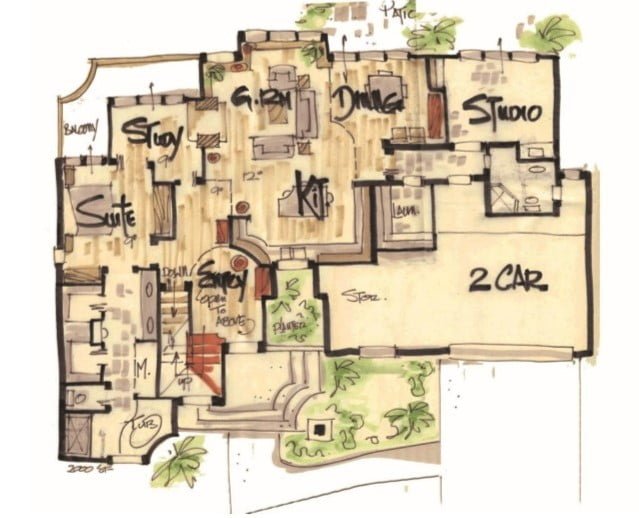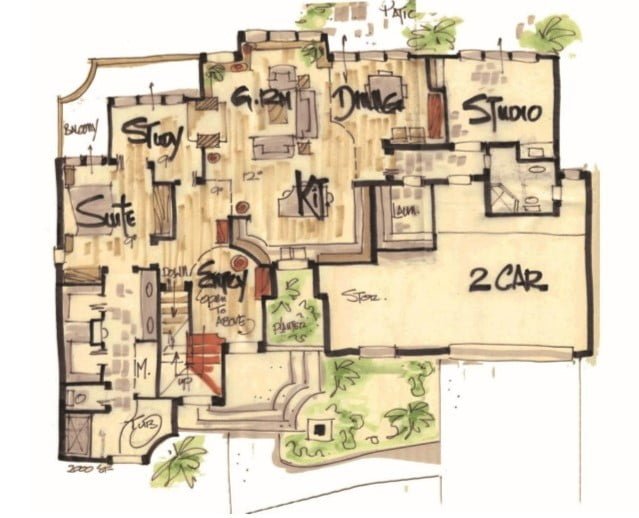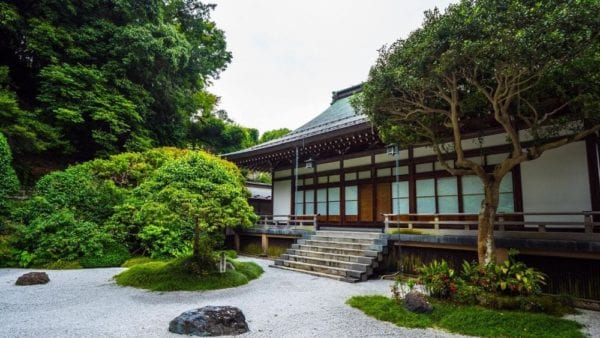Classic Japanese House Floor Planning 4 Essential Elements of Japanese Style 1 A surprising intellectual leap in the design of Japanese homes took place during the 14th century so powerful that it resonated for the next 600 years Around the time that European houses were becoming crammed with exotic bric a brac Zen priests were sweeping away even the furniture from their homes
Traditional Japanese houses have unique architectural and interior features that are considered an important part of Japan s history and culture These old features are often included in new homes because many people still find them charming Family homes were historically viewed as temporary and were reconstructed approximately every 20 years This traditional style of Japanese housing otherwise known as Minka is a mastery of architecture Blending modern trends with traditional nods to Japanese culture the style of these Japanese houses is simply stunning Traditional Machiya Japanese houses in the Gion district Kyoto
Classic Japanese House Floor Planning

Classic Japanese House Floor Planning
https://i.pinimg.com/originals/99/f3/d7/99f3d77ebd78d96722f5a6672108468a.jpg

Japanese House Plan Unique House Plans Exclusive Collection
https://unique-house-plans.com/wp-content/uploads/2020/04/2018-04-14_78_yolcgu.jpg

Minka Traditional Japanese people s House PART I
https://www.interactiongreen.com/wp-content/uploads/2022/09/yoshino-house-5.jpg
In this article let s take a look at some of the basic elements that make up a traditional Japanese house Text Sasaki Takashi Illustrations Aso Yuriko English version Judy Evans Keyword Japanese house Minka Irori Japanese Roof Styles Tokonoma Fusuma Sh ji The Exterior Elements of a Traditional Japanese House Japanese House Plans Creating The Perfect Home By inisip September 10 2023 0 Comment Japanese house plans have become increasingly popular over the years as people have come to appreciate the unique beauty of traditional Japanese architecture and the principles of simplicity and minimalism
Key Takeaways Embrace simplicity harmony and nature in your architectural projects by understanding the principles of traditional Japanese house design Create tranquil open spaces that seamlessly integrate indoor and outdoor environments Here is what you should look for to identify them Shoji Surprisingly Japanese houses didn t really use glass in their builds Instead natural lighting came in from sliding panels that were made of semi transparent paper on wooden frames They were used both indoors and outdoors as doors walls and windows
More picture related to Classic Japanese House Floor Planning

Courtyard House
https://st.hzcdn.com/simgs/db91eacb05e4f66c_14-4112/home-design.jpg

Https www redinkhomes au wp content uploads 2021 01 Stockman
https://i.pinimg.com/originals/e5/27/39/e52739c83f666a2062c8e4c918192c47.png

Home Design Floor Plans Traditional Japanese
https://i.pinimg.com/originals/45/13/d0/4513d04f5fd379a47fbc42acae95ce6a.jpg
Simplicity and Minimalism Japanese style houses prioritize simplicity with clean lines open spaces and a focus on functionality They embrace the concept of ma or empty space which creates a sense of spaciousness and serenity Natural Materials 12 Elements of the Traditional Japanese Home Privacy natural light and harmony with nature are enhanced through these design features Hope Anderson August 17 2015 I am a Los Angeles based writer and filmmaker who grew up in Japan
From left irimoya hip and gable roof yosemune hipped roof kirutsuma open saddleback roof This illustration above shows the ternary usual roof types of a traditional Japanese house The kiritsuma open wing right is this simplest style with the roofs sloping from the ridge down to who eaves on two sides molding two triangular gables at the narrow ends of the house The following are a few common features of traditional Japanese homes 1 Shoji Japanese houses didn t use historically use glass resulting in some interesting methods of natural lighting A shoji is a sliding panel that is made of translucent paper in a wooden frame They are used for both interior and exterior walls

Beverly Hills Minka House In Photos
https://robbreport.com/wp-content/uploads/2022/09/2-45.jpg?resize=125

3d Casa Japonesa De Dos Pisos O Restaurante De Estilo Antiguo 10946176 PNG
https://static.vecteezy.com/system/resources/previews/010/946/176/original/3d-two-floor-japanese-house-or-restaurant-old-vintage-style-png.png

https://japanobjects.com/features/traditional-house
4 Essential Elements of Japanese Style 1 A surprising intellectual leap in the design of Japanese homes took place during the 14th century so powerful that it resonated for the next 600 years Around the time that European houses were becoming crammed with exotic bric a brac Zen priests were sweeping away even the furniture from their homes

https://www.japan-talk.com/jt/new/japanese-houses
Traditional Japanese houses have unique architectural and interior features that are considered an important part of Japan s history and culture These old features are often included in new homes because many people still find them charming Family homes were historically viewed as temporary and were reconstructed approximately every 20 years

Home Style Guide Japanese Style Houses NewHomeSource

Beverly Hills Minka House In Photos

House Floor Plan For Residential Architecture

Pin By Z Z Arquitectos On 0 Vivienda M nima Modern Floor Plans Loft

40 Two Story Traditional Japanese House Floor Plan

Bloxburg House Layout House Layouts House Blueprints Bloxburg Layout

Bloxburg House Layout House Layouts House Blueprints Bloxburg Layout


Japanese Minimalist And Modern Two Story House Design HelloShabby

Classic Japanese House Floor Planning - In this article let s take a look at some of the basic elements that make up a traditional Japanese house Text Sasaki Takashi Illustrations Aso Yuriko English version Judy Evans Keyword Japanese house Minka Irori Japanese Roof Styles Tokonoma Fusuma Sh ji The Exterior Elements of a Traditional Japanese House